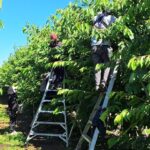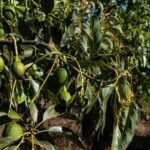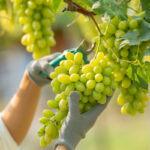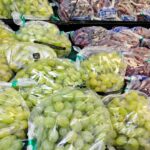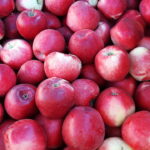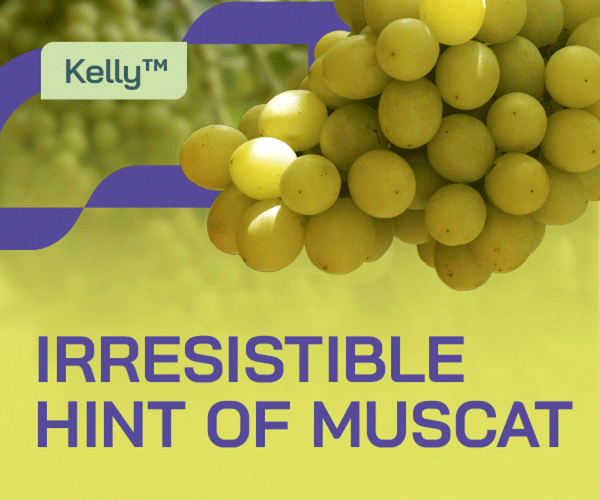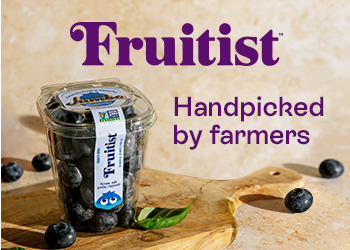USDA researcher reveals encouraging results of phosphine fumigation tests

Tests carried out by U.S. Department of Agriculture (USDA) scientists have indicated fumigation of fresh fruit using phosphine is a promising alternative to the widespread methyl bromide, for an array of reasons including environmental impacts and food quality. 
Methyl bromide fumigation is being gradually phased out throughout the world, partly as it is particularly damaging to the environment and destroys the atmospheric ozone.
Speaking at the International Seminar on the Potential Uses of Phosphine as a Fumigation Treatment, organized by the company Fosfoquim and held in the Chilean capital Santiago, a U.S. Agriculture Research Service (ARS) representative said the produce industry was eager to find practical alternatives to methyl bromide.
"There's an enormous push from our fresh fruit exporters to put another tool in the basket," ARS chemical researcher Dr. Spencer Walse told the audience.
"Methyl bromide is a ball of politics, economics and science. It is safe to say it is now out of the court of science and into a political and economic issue."
Easily transferable
During his talk, Walse explained the benefits of using phosphine as an alternative fumigation were in no way limited to environmental impacts, but included being able to maintain the cold chain supply, not having to adjust the treatment according to the type or weight of specific commodities, and improving worker safety.
"A very unique and advantageous feature of phosphine relative to methyl bromide is we no longer have to worry about how much load is in the fumigation chamber, or really what type is in the fumigation chamber, because phosphine takes longer to work than methyl bromide," he said.
"With the phosphine fumigation the insecticidal data that we collect on one commodity, as long as it's a fresh fruit – a fruit filled with water – should be very easily transferable to other fresh fruit.
"It turns out that even over the first couple of hours of fumigation, the phosphine is going into the commodity faster than methyl bromide.
"That we know by monitoring the absorbing in the very early stages of the fumigation. Then when we can see that relative ability of that gas to go into the load reflected in how fast the gas comes out of the load."
The safety aspect also apply to consumers, since lower chemical residue is left on the fruit than with methyl bromide.
In addition to the safety credentials of the phosphine treatment, Walse discovered that it had a positive effect on the quality of fruits like cherries compared to control samples after a couple of days, as browning occurred at a slower rate.
Need for the efficacy data
Companies like Fosfoquim have been successfully using phosphine fumigation treatments since 2001, and there has been a huge diversification in its global application in recent years.
Walse said that phosphine didn't fall immediately into place as an alternative to methyl bromide in the U.S. because extensive scientific tests needed to be carried out to assess a range of aspects relating to the treatment.
"We need the efficacy data and the insecticidal toxicity needs to be consistent with international phytosanitary protocols. We also need to examine what the impacts of the treatment are on each pest that needs to be examined," he said.
Thus far the tests into insecticidal toxicity have been encouraging, with the fumigation treatment found to be effective against common fruit pests such as the Asian citrus Psyllid, Aonidiella aurantii (red scale), Drosophila Suzukii and Epiphyas postvittana (light brown apple moth).
Logistical and operational changes
While Walse praised several key aspects of phosphine fumigation and said it was a strong and feasible alternative to methyl bromide, he added there would undoubtedly be a large cost for companies who wished to make the transition and they would have to wait longer for the fruit to be treated.
"The cons of course are related to the fact that in general we're dealing with a longer treatment time. It's not so bad because we're obviously at cold temperatures but instead of hours we're now talking about days," he said.
"It [also] requires a change in infrastructure, and industries have to recognize this. When you change it's going to cost money to modify your operations and that's going to be reflected by a change in logistics."
Photo: www.shutterstock.com
















